╬ó├▄╚” sits down with Tom Sleigh for his first media interview after his appointment to one of the UKŌĆÖs most high-profile planning roles

Tom Sleigh has a bombshell to deliver. Weighing his words carefully, the newly appointed chair of the City of LondonŌĆÖs planning committee declares: ŌĆ£I think the time of sky gardens is probably passing.ŌĆØ
It is a statement which might have been met with horror recently by most attendees at the UKREiiF conference, where Sleigh sat down to talk to ╬ó├▄╚”. Sky gardens have, in recent years, been a go-to cultural element in big City schemes, employed by project teams to gain the favour of the CityŌĆÖs planning committee. But Sleigh believes they do not provide any real benefit for office workers, the main users of these buildings. ŌĆ£Real gardens are back,ŌĆØ he claims.
╬ó├▄╚” is sitting at a table with Sleigh in an upstairs terrace of a bar called The Canary, overlooking the dock in Leeds on a sunny afternoon on the second day of the packed conference. Sleigh is here to network with developers and drum up interest in the ŌĆ£destination cityŌĆØ plan, which aims to diversify the CityŌĆÖs economy with more varied cultural offerings.
He is also introducing himself as the CityŌĆÖs new planning committee chair to the multitude of built environment professionals at the conference, and to the press ŌĆō this is his first media interview.
He was elected to his one-year term last month, replacing Shravan Joshi, who had held the role since 2022 and has now become the committeeŌĆÖs deputy chair. It is one of the UKŌĆÖs most high profile planning roles, the City being the location of some of EuropeŌĆÖs tallest, costliest and most complex construction projects.
It is also a planning authority beset with controversy given the Square MileŌĆÖs rich history, and its reputation for approving highly prominent schemes ŌĆō such as the Walkie Talkie, a building of which Sleigh is a self-confessed admirer ŌĆō which are, to put it mildly, not universally loved.
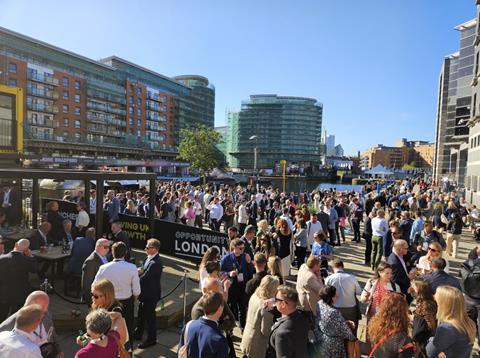
So architects and planners might have been reassured by the statement which Sleigh made to mark his arrival as committee chair in early May. ŌĆ£I want the most beautiful and future-ready buildings in the country to rise in The City ŌĆō architecture that lifts our spirits as much as our skyline,ŌĆØ he said.
He added that he wanted to strengthen how the City works with heritage groups to ensure a shared focus on ŌĆ£quality and sustainabilityŌĆØ, and to ŌĆ£create space for constructive dialogue that helps us to deliver the best outcomes for The City.ŌĆØ
What might be less reassuring for those concerned about some of the tall buildings which have been approved in the City in recent years is that Sleigh has backed every one of them. He has never disagreed with a planning officer recommendation during his 12 years as a councillor.
Three weeks into his new role, he explains his view: ŌĆ£What we are trying to do as an authority is to ensure the city is economically vibrant, to bring inward investment, to ensure itŌĆÖs a brilliant place for people to work, live, visit, so we earn the commute, we earn the council tax bill, we earn the holiday money.
ŌĆ£All of that is underpinned by a really high quality built environment. If you donŌĆÖt have good quality, interesting, and ŌĆō in my view ŌĆō occasional statement buildings, youŌĆÖre not delivering.ŌĆØ
╬ó├▄╚”s that give something back
The best outcomes are ones which ŌĆ£give something back to the street, to the urban realmŌĆØ, Sleigh believes. It is partly why he thinks sky gardens, which remove people from the streets, are going out of fashion.
ŌĆ£You need to think about the public realm, the spaces where people commute,ŌĆØ he says. ŌĆ£IŌĆÖm a great believer that we have a kind of civic contract with people in the Square Mile, and part of our civic contract has to be making sure we have those spaces.ŌĆØ
He sees preferences of the Square MileŌĆÖs planning officers changing as the ŌĆ£destination cityŌĆØ initiative, launched in 2022, continues to develop. This could mean more diverse cultural uses, but also asset types which might not be typically associated with the City.
ŌĆ£I think people will think harder about amenities,ŌĆØ Sleigh says. ŌĆ£Do we have the right mix of hospitality or wellness? Where are the creches, the doggy daycares, the NHS pop-up centres?ŌĆØ
In previous roles, Sleigh has been something of a highflyer in the world of business and communications. After graduating with a masterŌĆÖs degree in social and political sciences from the University of Cambridge in 2000, he continued his education at Harvard University through the prestigious Fulbright Scholar scheme.
His studies on the scholarship, which counts Rishi Sunak and Sylvia Plath among its alumni, focused on the satisfyingly weighty topics of ŌĆ£foreign policy, interstate threats, public sector management and exercising leadershipŌĆØ.

By 2008 he was chief advisor to the chief operating officer of the BBC, later moving to Lloyds Banking Group as its head of communications and public affairs. He was elected a councillor in the CityŌĆÖs Bishopsgate ward in 2013, a role which he held alongside a three-year stint as head of the public sector for Amazon in the UK.
He also spent four years as chair of the board of the Barbican Centre, three years as chair of the CityŌĆÖs investment committee, and has been council chair at Goldsmiths University since July last year. So it is fair to say that the CityŌĆÖs planning committee has appointed an individual with a fair amount of clout.
What is it that persuaded him to move full time into the planning sector? ŌĆ£IŌĆÖm continually amazed by the kind of spread of responsibility that a corporation has across a huge portfolio,ŌĆØ he says.
You have a choice as a planner, as a planning chair, or as a planning committee: You can act as a custodian for now, or you can try and shape the future
ŌĆ£But the planning function and the transportation function at the heart of all of this is probably the most interesting to me. I think itŌĆÖs interesting because you have a choice as a planner, as a planning chair, or as a planning committee. You can act as a custodian for now. Or you can try and shape the future.ŌĆØ
This is a job which is more contentious than almost anywhere else in the country, because while Sleigh wants to look forward, the past can never be ignored in the City. Nowhere else in London, or arguably in the world, is there such a tension between old and new.
Ancient history
Still one of the worldŌĆÖs main financial centres, the Square Mile is a place which demands world-class commercial development. But it is also 2,000 years old, the ancient core of London founded by the Romans in the first century AD, with a history which predates the rest of the capital by around 1,000 years.
The need for lengthy archaeological surveys and the likelihood of significant discoveries is a headache for developers which adds cost to schemes and complicates design. Plans for one tower scheme, Hershten PropertiesŌĆÖ 85 Gracechurch Street, were cut down by two storeys this year after Roman ruins were discovered on the site. Fresh plans for the Woods-Bagot-designed scheme, now including a basement exhibition space for the ruins, were submitted in April.
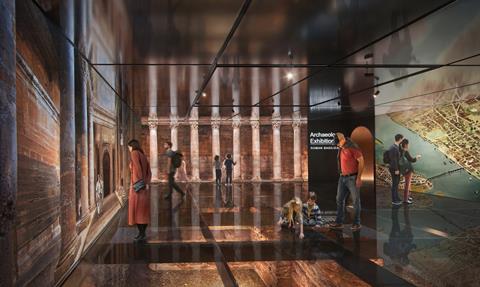
But the areaŌĆÖs history is also a headache for planners. Heritage groups, including government heritage advisor Historic England, a statutory consultee on large City planning applications, frequently object to proposals for new development in the City.
Roman ruins are just what lies below ground; there are more than 600 listed buildings in the Square Mile, including the big three ŌĆō the Tower of London, St PaulŌĆÖs Cathedral and the Monument to the Great Fire of London.
These buildings are increasingly under threat from new schemes, according to Historic England, which warned the City last year that its target to build 1.2 million square metres of new office space by 2040 would cause ŌĆ£severe harmŌĆØ to its most important heritage sites.
But a common criticism in architecture circles is that the City will approve any large development, regardless of its design quality or of its heritage impact. Does the planning committee have a good relationship with heritage groups?
ŌĆ£I think we have a good open dialogue,ŌĆØ says Sleigh. ŌĆ£I donŌĆÖt think theyŌĆÖre seen, as some might say, as just serial objectors. We see them as part of our planning ecosystem.ŌĆØ
I donŌĆÖt think at all thereŌĆÖs a tension between us and the heritage groups. I think occasionally we wonŌĆÖt see eye to eye on everything. But thatŌĆÖs OK
He points to the ability of large schemes to work around heritage assets, such as at 85 Gracechurch Street, or Fletcher PriestŌĆÖs 63 St Mary Axe, which will include a public display of a section of the Roman wall.
ŌĆ£Every day, we make a decision to showcase our heritage. So I donŌĆÖt think at all thereŌĆÖs a tension between us and the heritage groups. I think occasionally we wonŌĆÖt see eye to eye on everything. But thatŌĆÖs OK. That is a natural tension that will rise in a busy and growing city.ŌĆØ

Sleigh says the City has ŌĆ£phenomenalŌĆØ planning officers who work closely with developers to ensure schemes which come forward are fully compliant with planning policy. ŌĆ£Stuff should not be coming [forward] that will be rejected,ŌĆØ he insists.
So what about schemes like Bury House, a proposal to build a 43-storey tower next to the grade I-listed Bevis Marks synagogue, BritainŌĆÖs oldest synagogue? One local objector said the Stiff & Trevillion-designed plan was like building an office tower next to the Jewish version of St PaulŌĆÖs Cathedral.
Despite being called in by Angela Rayner, the application was recommended for approval by City planning officers and supported by Sleigh, who recognised concerns from the local Jewish community while arguing the scheme was in a ŌĆ£part of town where we do need to see developmentŌĆØ, adding officers had made a ŌĆ£very difficult and correct decisionŌĆØ.
Amid a considerable backlash against the application, the committee rejected it in December last year with 14 votes against and eight in favour.
City cluster controversy
Other schemes, such as PLPŌĆÖs 22 Bishopsgate, have provoked controversy because of their design. The City cluster is the biggest group of tall commercial buildings in Europe, the continentŌĆÖs version of New York. Does he think it has been a success?
ŌĆ£I do,ŌĆØ he says. ŌĆ£I think it looks impressive. I think it looks meaningful. I think it gives a character and a dynamic to the City that makes it look more like a global financial centre.ŌĆØ
In his new role, Sleigh has found himself on the front line of the battle between preserving the CityŌĆÖs history and growing its economy. This small part of central London accounts for 4% of national GDP, generating ┬Ż97bn for the UK economy in 2024.
ŌĆ£It is the most economically dense place on the planet, and the reason that it has been is because of its ability to evolve and adapt to change,ŌĆØ says Sleigh.
ŌĆ£So, if there are forces that are trying, in my view, too hard to prevent development and growth, those are forces which will be a drag on our national story of growth.
ŌĆ£And I worry for those voices who are currently advocating for too much restraint, that when we do look back at the national story in years to come, they will be seen as blockers at a critical time of national economic importance.ŌĆØ




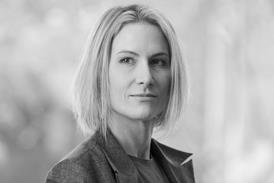
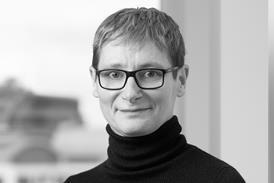
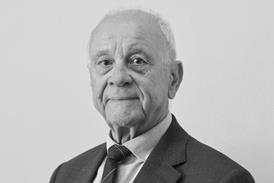


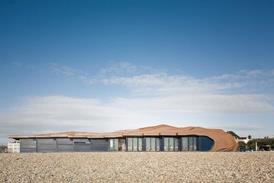


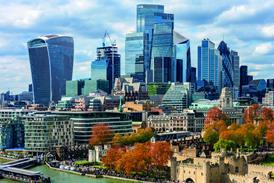










No comments yet